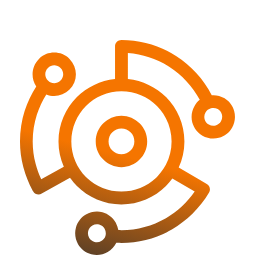Surface photogrammetry enables the creation of accurate and detailed 3D models of industrial plants. These models, often referred to as digital twins, represent the physical assets in a virtual environment. Digital twins can be used for planning, analysis, and simulation, providing a comprehensive understanding of the plant’s structure and components.
Industrial Plant Maintenance with Surface Photogrammetry
How Depthscape Helps in Industrial Plant Maintenance

Capture the existing plant conditions with photogrammetry. Design modifications in a virtual environment, ensuring compatibility with the current layout.
Develop virtual training modules using 3D models created through photogrammetry. Simulate maintenance scenarios, allowing staff to practice procedures in a controlled environment.
Applications
Industrial plants have numerous components and structures that require regular inspection and monitoring. Surface photogrammetry allows for the creation of high-resolution 3D models that can be used to visually inspect equipment and structures remotely. This helps in identifying issues such as corrosion, wear and tear, or other forms of damage without the need for physical presence.

Accurate measurements of equipment dimensions are crucial for maintenance activities. Surface photogrammetry can provide precise measurements of objects and structures within the plant environment. This information aids in assessing the condition of components, planning for replacements or repairs, and ensuring that new equipment fits seamlessly into existing spaces.

By regularly capturing images of the plant environment, surface photogrammetry can be used to detect changes over time. This is especially useful for monitoring structural deformations, identifying potential issues early on, and planning maintenance activities before problems escalate.

Photogrammetric data can be used to create detailed documentation of the plant’s condition. This historical record is valuable for tracking changes over time, complying with regulatory requirements, and providing a visual archive that aids in decision-making processes related to maintenance and upgrades.

Pros
Surface photogrammetry provides highly accurate and precise 3D models, enabling detailed measurements and assessments of industrial plant components. This accuracy contributes to more informed decision-making during maintenance activities.
The ability to inspect equipment and structures remotely using photogrammetric models reduces the need for physical presence in hazardous or hard-to-reach areas. This enhances safety by minimizing exposure to potential risks.
Surface photogrammetry allows for the early detection of issues such as corrosion, deformation, or wear and tear. Identifying problems at an early stage enables proactive maintenance, reducing the likelihood of unexpected failures and minimizing downtime.
By facilitating remote inspections and providing detailed information, surface photogrammetry helps streamline maintenance processes. This can result in significant time and cost savings as maintenance teams can prioritize tasks more efficiently and plan resources accordingly.
The 3D models created through surface photogrammetry assist in efficient planning for maintenance activities. Maintenance teams can visualize the plant’s condition, prioritize tasks based on urgency, and allocate resources effectively.
Photogrammetric models serve as detailed documentation of the plant’s assets and their conditions over time. This documentation aids in compliance with regulatory requirements and provides a historical record for auditing purposes.
Surface photogrammetry contributes to comprehensive safety assessments by providing detailed visualizations of the plant environment. This enables the identification of potential safety hazards and the implementation of measures to mitigate risks.


